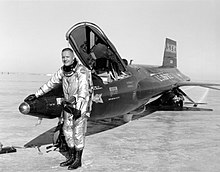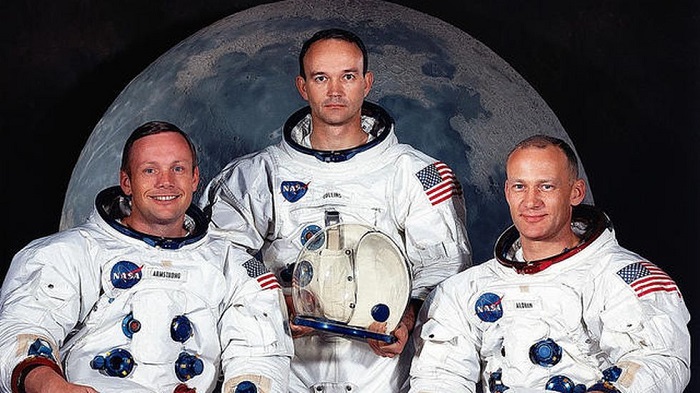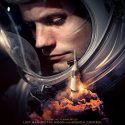For the uninitiated
(from IMDB)Dramatic, moving and deeply human, Armstrong offers the definitive life story of Neil Armstrong: from his childhood in Ohio to his first steps on the Moon, and beyond.
Now that you’re caught up
I love origin stories regardless of who the subject is about for the insights they tend to provide into the subjects lives, which can help us understand whether the deeds that we know them for were potentially or ultimately circumstantial and beyond their control. This review of Armstrong is going to be almost as much a biographical essay as it will a review of the documentary since there were that many awesome details both in testimonial and in terms of the overall cinematography. How fitting that this origin story was released so close to the 50th anniversary of Apollo 11. I was blown away by this documentary in terms of all the archived footage and testimonials from family and friends as well learning that Harrison Ford (Raiders of the Lost Ark, The Fugitive) narrated Neil’s words! You can’t be first without making someone else second… some dark revelations also make this documentary a must-see.
For starters I was amazed to learn of his small-town upbringing in socially conservative Wapakoneta, OH. and the origins of his love for flight. We get to hear from Neil’s father Stephen at one point say that Neil was interested in airplanes “from the time he was a little boy. His mother bought him a .20 cent airplane and he built that; then from the 20-cent he went to a 50-center and went on up. Pretty soon he was building em with motors and was flying and testing em.”
 “I knew what I wanted to be when I grew up,” Harrison reads, “I wanted to be an airplane designer. I wanted to spend my life in aviation.” His younger son Mark said Neil got his pilot’s license before he got his driver’s license – unsurprisingly cool, but was this the beginning of a potentially dangerous obsession? His sister June recalls he had turned 17 and was awarded a Navy scholarship to study aeronautical engineering and flight training in college when the North Koreans invaded South Korea. Testimonies from his commanding officers and superiors were consistent between his being a quiet and humble individual, and a great aviator. As commendable as being a great aviator is the traumas of war and human loss take their toll and harder so on younger minders, Neil was among the youngest in his squadron. Neil’s ship suffered what he described in one of his letters as “a terrible accident,” with a count of four killed and five missing and about 15 others severely burnt, Harrison narrates, “It was a tragedy. It took me a long time to get over.” One commonality I have heard in testimonies from veterans is that you don’t ever “get over it,” as much as numb yourself to a point that you can continue with your job.
“I knew what I wanted to be when I grew up,” Harrison reads, “I wanted to be an airplane designer. I wanted to spend my life in aviation.” His younger son Mark said Neil got his pilot’s license before he got his driver’s license – unsurprisingly cool, but was this the beginning of a potentially dangerous obsession? His sister June recalls he had turned 17 and was awarded a Navy scholarship to study aeronautical engineering and flight training in college when the North Koreans invaded South Korea. Testimonies from his commanding officers and superiors were consistent between his being a quiet and humble individual, and a great aviator. As commendable as being a great aviator is the traumas of war and human loss take their toll and harder so on younger minders, Neil was among the youngest in his squadron. Neil’s ship suffered what he described in one of his letters as “a terrible accident,” with a count of four killed and five missing and about 15 others severely burnt, Harrison narrates, “It was a tragedy. It took me a long time to get over.” One commonality I have heard in testimonies from veterans is that you don’t ever “get over it,” as much as numb yourself to a point that you can continue with your job.
On September 13 of the same years as that accident he was on an armed reconnaissance mission when he came under anti-aircraft fire. As Harrison narrates it Neil states he was diving on a target and only narrowly missed crashed landing, but was able to “nurse the aircraft” back over friendly territory and parachuted out; it was that experience, Neil’s commander states, that sold Neil as more than just “one of the boys.” His decision making and skills in maneuvering the aircraft the way he did, “put him head and shoulders above the rest.”
Once Neil completed his tour in Korea he returned home to attend Purdue University in Indiana, which was where he met Janet at a Phi Delta Tau party. As Janet recalls it he was confident she was the one he’d marry, but he wouldn’t ask her out till after he finished school. However, finishing school only led him to back his obsession: test pilot at Edwards Air Force Base (EAB). Easily the most exciting place to work for a guy like Neil, but that excitement came with a price: being an aircraft test pilot means constantly looking for problems with the aircraft and trying to making the correct adjustments so as not to die, which didn’t always work out. He and Janet got started on their family in January 1956. Rick was their first born followed about four years later by Karen. Janet recalls attaching cowbells to their backs so she could hear them playing, which might beat the sounds of screams when accidents happen… jury’s out since I’m not a parent.
While at EAB one of Neil’s more memorable and defining moments came when he got to fly the X-15: a small plane powered by a huge rocket and dropped from a B-52 bomber; the plane’s purpose was to give pilots the opportunity to get themselves just above the atmosphere to be able to figure out how to get back down and come to a landing. If you have ever seen Firstman (2018) it’s the first scene, and those who have seen it are familiar with what happened to Karen, but this edition goes a little deeper about what happened, and it’s difficult to not shed a tear or two: less than three years old she developed a brain tumor that not even radiation and therapy could stop. Listening to Harrison read Neil’s words I got a sense that Neil’s only idea of mourning is the same one he had to rely on during his time in Korea that you steel yourself and keep going. Both this documentary and the afore-mentioned Hollywood blockbuster show Neil discovering NASA’s Apollo project down in Houston looking for aspiring astronauts, and as tends to happen when a tragedy of that magnitude occurs Janet, like any mother, was ready to be anywhere else but the desert. So they relocated to Houston in 1962.
Neil became NASA’s first civilian astronaut, and then Mark – their second son – came along that same year. He along with colleague and close friend Ed White went halfsies on a plot of land and built houses across from each other. That’s when we get to hear from his colleagues at NASA. Frank Borman recalled one of the big differences between Neil and most of the more military-types were the type that would simply want to know what time it was when looking at a clock, but Neil was always equally interested in how it worked! “Neil lived in a shell, and in order to get Neil out of his shell you had to introduce him to a subject he was interested in and convince him you knew something about that subject, and if you passed that test then he’d pop out of his shell with a big smile on his face and be your best buddy!” –Michael Collins.
Once Project Mercury was completed and the test of putting a man into orbit and bringing him safely back home had been a success the next mission w as Project Gemini, which you can read more about in the linked Wikipedia article. Neil’s writings make it clear that everyone in the NASA program had their minds on the race between the US and the USSR. The idea of hourly employment and notions like “quitting time” were not in the vocabulary of any of those men. Mark recalled that his dad was training all the time and would often not be home for long stretches (14-hour days and 6.5-day weeks), which would put Janet in a position of having to play all parts mom, housekeeper, nanny and super-woman. While Neil would be off on some kind of assignment whether boning up on his geology, getting subjected to this and that endurance test by NASA Mark recalled, “Mom was an unsung hero,” he described how Neil was probably most guilty of simply not being communicative enough and keeping Janet more informed of what he was doing.
as Project Gemini, which you can read more about in the linked Wikipedia article. Neil’s writings make it clear that everyone in the NASA program had their minds on the race between the US and the USSR. The idea of hourly employment and notions like “quitting time” were not in the vocabulary of any of those men. Mark recalled that his dad was training all the time and would often not be home for long stretches (14-hour days and 6.5-day weeks), which would put Janet in a position of having to play all parts mom, housekeeper, nanny and super-woman. While Neil would be off on some kind of assignment whether boning up on his geology, getting subjected to this and that endurance test by NASA Mark recalled, “Mom was an unsung hero,” he described how Neil was probably most guilty of simply not being communicative enough and keeping Janet more informed of what he was doing.
March 1966: Neil and David Scott were to pilot the Gemini VIII (8) to rendezvous and dock with the Agena. Scott recalls that the first two stages of the mission went off without a hitch, but only a few minutes after Neil completes the docking Scott alerts him to their roll, but Scott only found out from reading Neil’s attitude horizon “8 ball” indicator as they couldn’t see Earth from the angle they were at; Harrison reads, “When the rates became quite violent it was a bit dicey,” and then to worsen matters they lost radio contact. This was likely the hardest time in Janet’s life once even NASA decided to cut off their direct communications link to radio exchange that wasn’t even available to the general public. Fortunately, Neil was able to recover from the rapid roll by using the Re-entry Control System (RCS). Yet, probably the funniest take-away from that story was hearing Harrison reading about how Neil’s carrier was waiting for him in the Caribbean, but he landed somewhere near Okinawa, “That’s the furthest anyone’s ever missed; I don’t expect that record to be broken.”
Footage from Neil’s welcome home party back in his home town spoke volumes to why, probably, he was the one who NASA’s top PR spokesman Christopher Kraft asserted ought to be “the first on the surface.” Not long after Neil’s welcome home party did the Apollo 1 tragedy occur that took the lives of Ed White, Virgil “Guss” Grissom, and Roger Chaffee. Neil described the loss and the lesson as an indictment on all of them as to how much work still had to be done. There were 30 people applying to be the first man on the moon, and interestingly Kraft stated he believed all the men could have done a great job. Even Collins asked what set Neil apart from the other 29? Collins’ own belief was bi-sected: on the shorter view there was the combination of Neil’s experience as a combat pilot during Korea coupled with his experiencing flying the X-15; alternatively, the longer view was that Neil’s general demeanor was far more socially conservative as his upbringing would have suggested about him. Collins further remarked that Neil wasn’t the type to sell the program, or “go out and drink with the boys and make a fool of himself. He was a straight arrow.”
Chris Kraft said, “Did I have something to do with Neil being the first on the moon? Yes, I did it!” While I am not a military man I have been in a fraternity, and the sense of comradery is often palpable enough that you figure out how to accomplish certain tasks as a team regardless of whether the team is two or 10 members because while the task could be as simple as putting one‘s foot on an alien surface the gravity behind the task, as Neil so eloquently describe the gravity of being first, it affects more than just that individual. After having discussed this matter with at least a couple of my own friends as well as to have seen enough archive footage to know the suggestion is not outlandish I have wondered for at least 10 years now if both men couldn’t have descended the Lunar Module, Buzz immediately after Neil, and then both men stand on either side of the ladder and make their first step together. Kraft’s explanation left me livid, suggesting that Aldrin simply wasn’t as good as Neil was as far as likeability and “being the right person.” If you’ll forgive the tangent, I also believe there was enough room for Jack on Rose’s floating wood. Perhaps Neil’s son Rick said it best to explain why Neil was selected over Buzz and that’s because Neil always came across as a team player. It was never about Neil, it was about the team with him. We’ll never know if Buzz kept that attitude in his heart.
One of Neil’s more moving sentiments was when he was staring back at Earth and seeing it as the remarkably vulnerable blue marble he said, “Protection is required; however, not from foreign aggressors or natural calamity, but from its own population.”
Probably one of my favorite parts was listening to one of Neil’s close friends Charlie Mechem describe the way three generations of his family watched and reacted to the moon landing. Charlie’s father was born in 1893 and had already witnessed a lot of other firsts for mankind so his jaw was already on the floor just seeing Eagle land on the moon. Charlie was himself ecstatic for the obvious reason of seeing one of his best friends “be the first,” but what really made this particular anecdote was how Charlie described his own kids’ reaction to the live footage, “Yeah, I think I saw a show about this last week,” even Charlie belted out a laugh.
There’s a scene where the camera is essentially taking Neil’s perspective as he descends the LM’s ladder. Harrison is narrating in the background that Neil didn’t really have a script or any real plan for what he was going to say when he made the first step except that he reasoned to himself, “I’ll be taking a relatively small step from there down to there, but then I thought about all the people who had made it possible for me to make that step.” The camera pans down the ladder in such a way that between the lighting, the angles, and the slow descent of the view down the ladder the Lunar Module seems to transform into this state-of-the-art piece of technology with the aluminized Kaptan film seeming to glow gold in reflection of the sun’s light that it must have looked like in 1969.
Some of the awesome voice-overs from those who rejoiced in the accomplishment, “Being closer to the moon helps us realize that we’re all human beings together,”
“I hope this brings unity,” and more similar sentiments came out that for at least one day there was a mission being accomplished that had us all united… well, most of us.
Following the three heroes’ return home was the world tour they went on; everywhere they went they were heralded, but only Neil was requested to speak. Watching all the footage and seeing the numerous speaking engagements the three men attended I got the overwhelming sensation that the world at large thinks Neil was up there by himself, and that Buzz’s being second somehow doesn’t register in many a minds that he was still the second human being to walk on another planetary surface. One report says Neil wasn’t all that fond of the media exposure from the tour, but that he dealt with it as part of the job almost like one tolerates the meetings one may have to attend at work; it’s not fun just necessary. As David Scott put it, “The fact that he’s first everybody wants Neil Armstrong.”
“Thank God social media didn’t exist back then,” Rick Armstrong on the sheer volume of exposure and media attention garnered from Neil being first on the moon.






